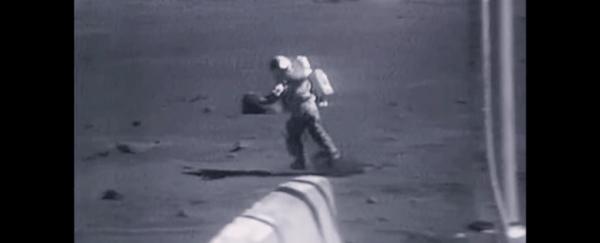We've all seen footage of astronauts bouncing around on the Moon, looking like they're having the best time ever.
But getting your body to cooperate in low gravity is not that easy - and, delightfully, NASA has a footage collection of men in puffy spacesuits falling over on the lunar surface.
It's not just for giggles, either. NASA has made detailed reports about all the times astronauts lost their footing, and there are good scientific reasons for this.
For Apollo 15, it was to study the metabolic rates of the astronauts as they traversed various types of terrain on the Moon - uphill, downhill, and flat terrain.
For Apollo 16, it was to evaluate the differences between dexterity and locomotion on Earth and the Moon, to better understand both lunar gravity and how it affects movement on the surface.
Part of the reason for the clumsiness is that, while you might weigh less on the Moon, your mass stays the same - and therefore inertia, which is a body's resistance to changes in motion and is related to mass, not weight, also stays the same.
Thus an astronaut moving about on the Moon is doing so in very different conditions to what they're used to - and this, in turn, results in some ups-a-daisies.
NASA researchers made sure they described these falls, and why each of them happened, as accurately as possible.
One Apollo 15 fall reads like this:
"[Commander David Scott] begins moving toward a new area as he gives the camera reading and summarises the description of the area. He steps around a group of rock fragments and then his right foot steps into a small depression and he begins to lose his balance. As he steps with his left foot, it slides off a small rock and continues sliding on the loose surface soil. While trying to drive his feet back under his center of gravity, Scott increases his forward velocity. He then falls forward with both hands extended to break the fall. Landing on his left side, he rolls counterclockwise and on his back and is then out of view of the TV camera."
The Apollo 16 report delves into a little more analysis, breaking down the falls to clarify the reason for the fall, how it happened, and how the astronaut recovered.
Lunar module pilot Charles Duke fell when he stopped to pick up a pair of tongs and, "in doing so he stepped on the tongs so that when he tried to lift them he lost his balance."
Commander John Young also fell picking up objects - a brush, a sample bag - and other falls are related to the loose, dry lunar regolith, which makes it difficult to get good traction on the Moon's surface.
It's actually all very useful information, especially since humans may soon be making their way back to the Moon.
It also makes for an enjoyable video experience - and one small reason to be glad we're not astronauts. Can you imagine if your trips and falls were all on permanent NASA record?
Actually, scratch that. It would be totally worth it.
